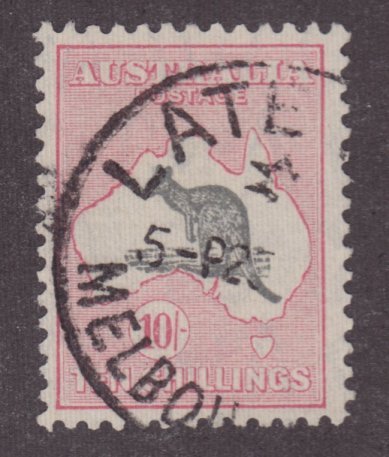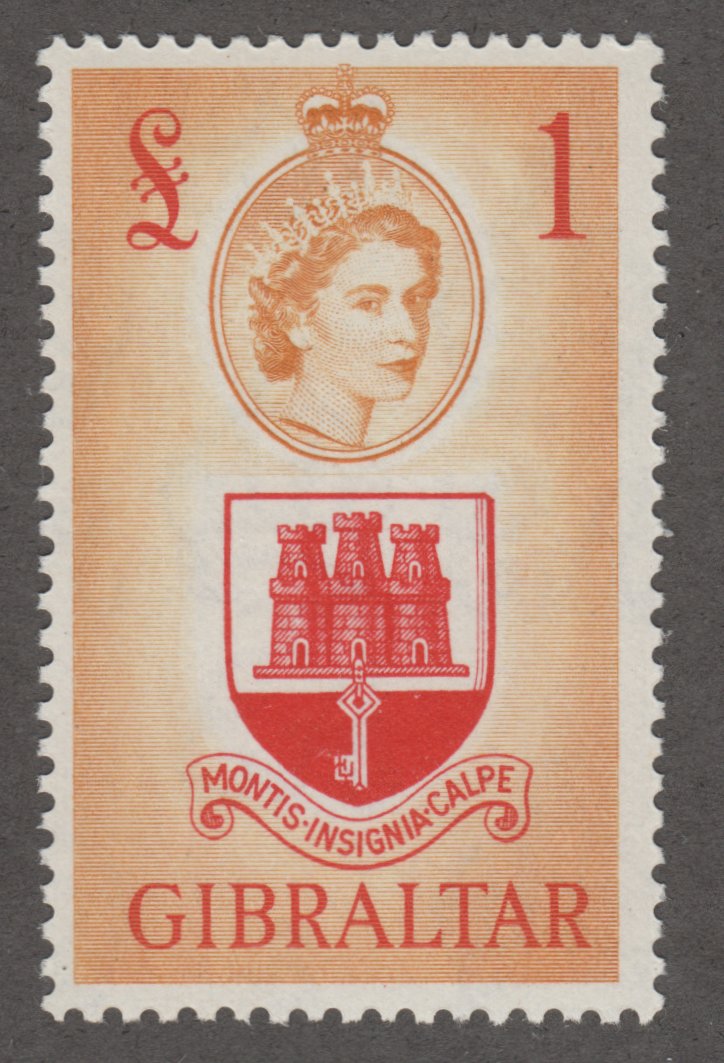
Discussion - Member to Member Sales - Research Center

Discussion - Member to Member Sales - Research Center



Login to Like
this post
"trimmed close.?" Thanks!

Login to Like
this post

08:40:45pm
""trimmed close.?" Thanks! "
No .... no.
trimmed close into design on left and right
but the part you asked about:
and {cut} well into design on bottom."
I agree with this description.
Roy

Login to Like
this post
Thank you so much for the help. Learning the accepted and precise language is valuable to me. This lot is just for our little local club auction, but I'd still like the descriptions to be written using the accepted terms.
Let's see if I understand the nuances. The correct term is "trimmed close into design" for less severe intrusions and "cut (or trimmed) well into design" for more severe trims? And now I know that I need to clearly specify how much of the design is compromised.
So am I correct in thinking that "cut" is used only when the trimming really takes out a chunk of the design, but "trimmed" is more for "close shaves"?
I think I'll start reading descriptions written for single stamps by big name auction houses. Does anyone have a recommendation for an auction house that writes excellent descriptions? I haven't bothered reading those in the past because so much of their offerings are waaay out of my stamp budget, but I think those catalogs would be a great place to learn how to write up these auction lots like the pros.

Login to Like
this post
Theresa,
Why do you have to do all of this work for the auction? IMHO seems you are doing a whole lot of extra work that is really redundant and a huge waste of your time. At the CCSC we also have an auction at each meeting, but the members bring in their lots and we check them in and place them on the tables allowing everyone to look at them, before the meeting starts and then again after the meeting, during the refreshment break they can check the lots out again. Similar to SOR, the stamp club has nothing to do with the lots, being the vehicle for selling only. The lots are sold as is, where is and faults had better be listed or the sale can be reversed. Even after the meeting and the auction ends and the buyer takes the lot home, perhaps finding a hidden or not mentioned fault, it can be returned and the seller has to refund the money. This was only a problem once in a great while, so it was basically a non-issue. We had many auctions that ran into hundreds of dollars and occasionally, during season of course, there would be a night we would sell over $1,000 in lots and average 100 lots each month, maybe a few less in the summer months. It has been operated this way for over 20 years, that I know of and probably much longer than that, so it does work.
Mike

Login to Like
this post
Your best bet to satisfy your curiosity Theresa is the Stamp Auction Network which is online and features many different auction houses and sellers.
Stamp Auction Network

1 Member
likes this post.
Login to Like.
Hi;
Correct term should be compost (worm food)....
TuskenRaider

1 Member
likes this post.
Login to Like.
Awww, Mike, are you worried about me working my fingers to the bone? LOL!
We type up the auction list so that we can email or snail mail it to members ahead of time. This allows the members to look and see if the stamps are on their wantlists. I don't mind typing it up for the club. I don't write up all of the auction slips, so I am doing less work than you are envisioning and some members submit their list in excel format so all I have to do is cut and paste. I do, however, amend lots to add any undescribed faults that I see and then Mother Theresa gives the seller a slap on the wrist for not describing the faults themselves. Naughty naughty seller! LOL!
Thanks fellas for the tip about the auction network. Are there any specific sellers that you believe are extremely adept with their descriptions?

Login to Like
this post

01:47:59pm
Then just list the SC number and add some faults.
Then go on to the next number.
If the faults affect the number,
list it as SC$ $$$$ ? or SC# $### ?
At the top of the list put a note;
"All numbers are the owner's best guess
and should be checked before bidding.
I see no reason you should take on the responsibility
for possible mis-identification.

Login to Like
this post

I'm working on my local club auction and a member submitted this stamp. How should I describe the fact that part of the stamp is missing - trimmed too short? Is that the correct terminology? Thanks for the help!


Login to Like
this post

re: What is the correct term to describe imperf cut short?
"trimmed close.?" Thanks!

Login to Like
this post
BuckaCover.com - 80,000 covers priced 60c to $1.50 - Easy browsing 300 categories
01 Aug 2016
08:40:45pm
re: What is the correct term to describe imperf cut short?
""trimmed close.?" Thanks! "
No .... no.
trimmed close into design on left and right
but the part you asked about:
and {cut} well into design on bottom."
I agree with this description.
Roy

Login to Like
this post

re: What is the correct term to describe imperf cut short?
Thank you so much for the help. Learning the accepted and precise language is valuable to me. This lot is just for our little local club auction, but I'd still like the descriptions to be written using the accepted terms.
Let's see if I understand the nuances. The correct term is "trimmed close into design" for less severe intrusions and "cut (or trimmed) well into design" for more severe trims? And now I know that I need to clearly specify how much of the design is compromised.
So am I correct in thinking that "cut" is used only when the trimming really takes out a chunk of the design, but "trimmed" is more for "close shaves"?
I think I'll start reading descriptions written for single stamps by big name auction houses. Does anyone have a recommendation for an auction house that writes excellent descriptions? I haven't bothered reading those in the past because so much of their offerings are waaay out of my stamp budget, but I think those catalogs would be a great place to learn how to write up these auction lots like the pros.

Login to Like
this post

re: What is the correct term to describe imperf cut short?
Theresa,
Why do you have to do all of this work for the auction? IMHO seems you are doing a whole lot of extra work that is really redundant and a huge waste of your time. At the CCSC we also have an auction at each meeting, but the members bring in their lots and we check them in and place them on the tables allowing everyone to look at them, before the meeting starts and then again after the meeting, during the refreshment break they can check the lots out again. Similar to SOR, the stamp club has nothing to do with the lots, being the vehicle for selling only. The lots are sold as is, where is and faults had better be listed or the sale can be reversed. Even after the meeting and the auction ends and the buyer takes the lot home, perhaps finding a hidden or not mentioned fault, it can be returned and the seller has to refund the money. This was only a problem once in a great while, so it was basically a non-issue. We had many auctions that ran into hundreds of dollars and occasionally, during season of course, there would be a night we would sell over $1,000 in lots and average 100 lots each month, maybe a few less in the summer months. It has been operated this way for over 20 years, that I know of and probably much longer than that, so it does work.
Mike

Login to Like
this post

re: What is the correct term to describe imperf cut short?
Your best bet to satisfy your curiosity Theresa is the Stamp Auction Network which is online and features many different auction houses and sellers.
Stamp Auction Network

1 Member
likes this post.
Login to Like.

re: What is the correct term to describe imperf cut short?
Hi;
Correct term should be compost (worm food)....
TuskenRaider

1 Member
likes this post.
Login to Like.

re: What is the correct term to describe imperf cut short?
Awww, Mike, are you worried about me working my fingers to the bone? LOL!
We type up the auction list so that we can email or snail mail it to members ahead of time. This allows the members to look and see if the stamps are on their wantlists. I don't mind typing it up for the club. I don't write up all of the auction slips, so I am doing less work than you are envisioning and some members submit their list in excel format so all I have to do is cut and paste. I do, however, amend lots to add any undescribed faults that I see and then Mother Theresa gives the seller a slap on the wrist for not describing the faults themselves. Naughty naughty seller! LOL!
Thanks fellas for the tip about the auction network. Are there any specific sellers that you believe are extremely adept with their descriptions?

Login to Like
this post
Silence in the face of adversity is the father of complicity and collusion, the first cousins of conspiracy..
05 Aug 2016
01:47:59pm
re: What is the correct term to describe imperf cut short?
Then just list the SC number and add some faults.
Then go on to the next number.
If the faults affect the number,
list it as SC$ $$$$ ? or SC# $### ?
At the top of the list put a note;
"All numbers are the owner's best guess
and should be checked before bidding.
I see no reason you should take on the responsibility
for possible mis-identification.

Login to Like
this post

